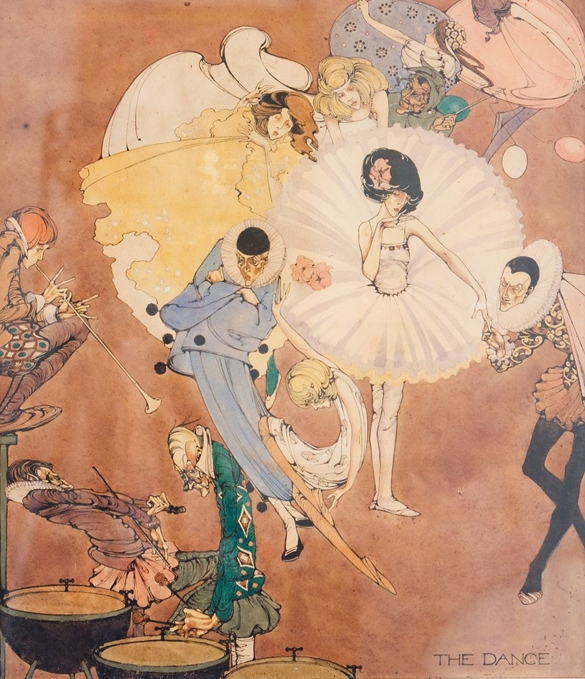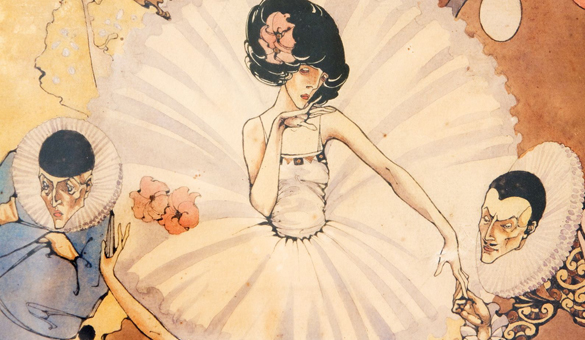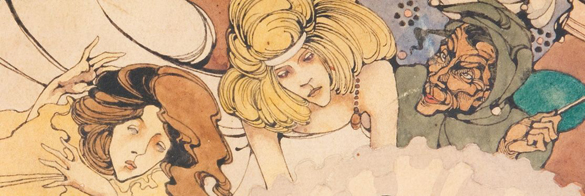Joyce Mercer (1896 to 1965) is known from the golden age of illustrated children’s books. Her major works included Grimm’s Fairytales in 1920 and the Classic Fairytales of Hans Christian Andersen in 1935. The Art Deco influences in all her work are clear. She would have seen and admired the work of Alphonse Mucha and Arthur Rackham among many others. This was the post-World War I era in which children were nourished by stories of parallel existences suffused with hope and innocence all populated by wizards, princes, fairies and elves. The good and gentle would triumph. It was an era that would later be dashed away by World War II.
“The Dance” was painted sometime in the 1930’s. It has not been reproduced in any publication. The beautifully executed clean ink lines and poster-style composition are what we would expect from Joyce Mercer. Typically, the execution of the expressive hands of each figure is exquisite. However, is it just another beautifully depicted dream-scene of two men vying for the hand of a beautiful maiden? Or does it tell us much more about Mercer herself?
The figures are playing out a scene of a play that can only be acted in the dreams of the viewer. The young females are smooth-faced, expressionless, pubescent and innocent. There is a sadness to the way each is posed differently for the beginning of the dance; the scene waits for the central figure in white to accept the invitation to dance with one of her two suitors. The other’s jealousy bites. But there is nothing gallant or romantic here; only an all-pervasive distasteful feeling of cunning. You really don’t want her to dance with this calculating dandy. The older men – the drummer, the fiddler and the jester – have seen it all and know how the dance will be played out. The end of the dance will mark the beginning of the end of innocence.
Dare one propose that “The Dance” represents Joyce Mercer’s binary existence? Was the world she lived in spiritually her make-believe world? Could the real world only corrupt and pollute the impossible beauty that she had illustrated and inhabited over the years? Is she the central figure in white?
Joyce Mercer was a contemporary of my grandmother at art school. I may have met her very briefly when I was very young. If I met her now I would have only one question: “Miss Mercer, do you believe there are fairies at the bottom of your garden?” I have no doubt she would answer in the affirmative.
Photos by Ross Coupland



